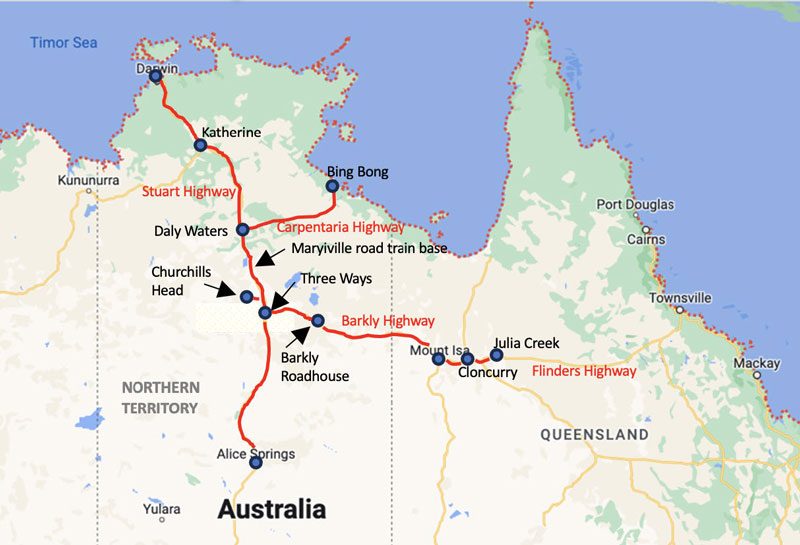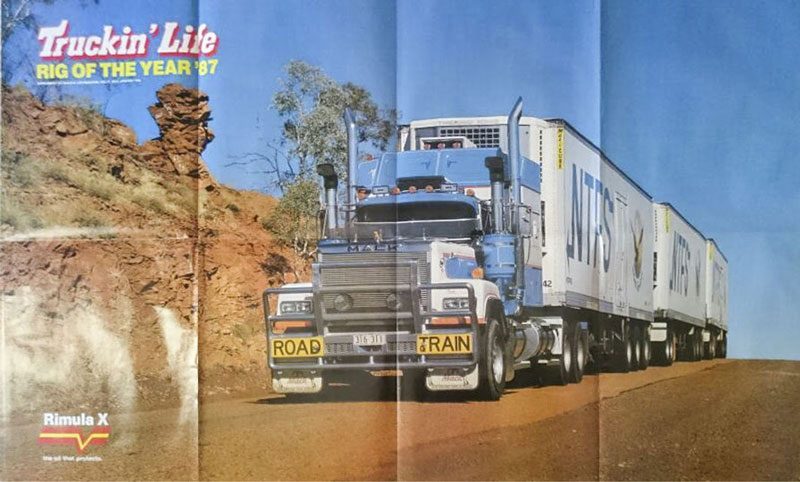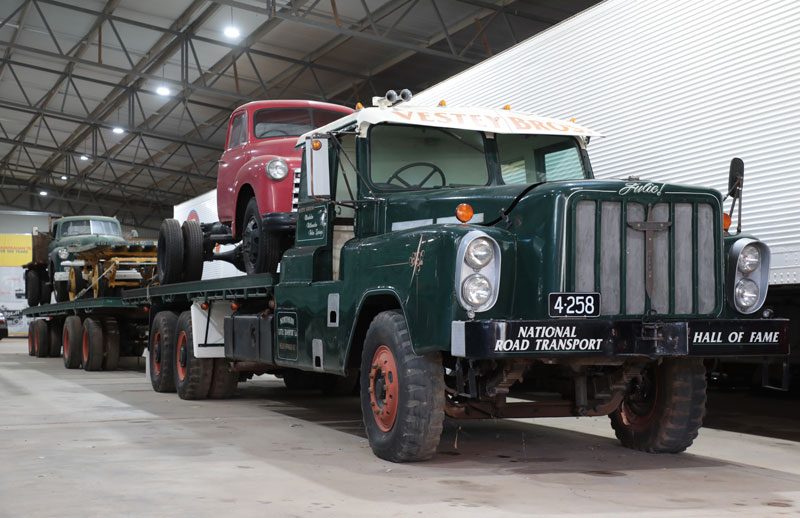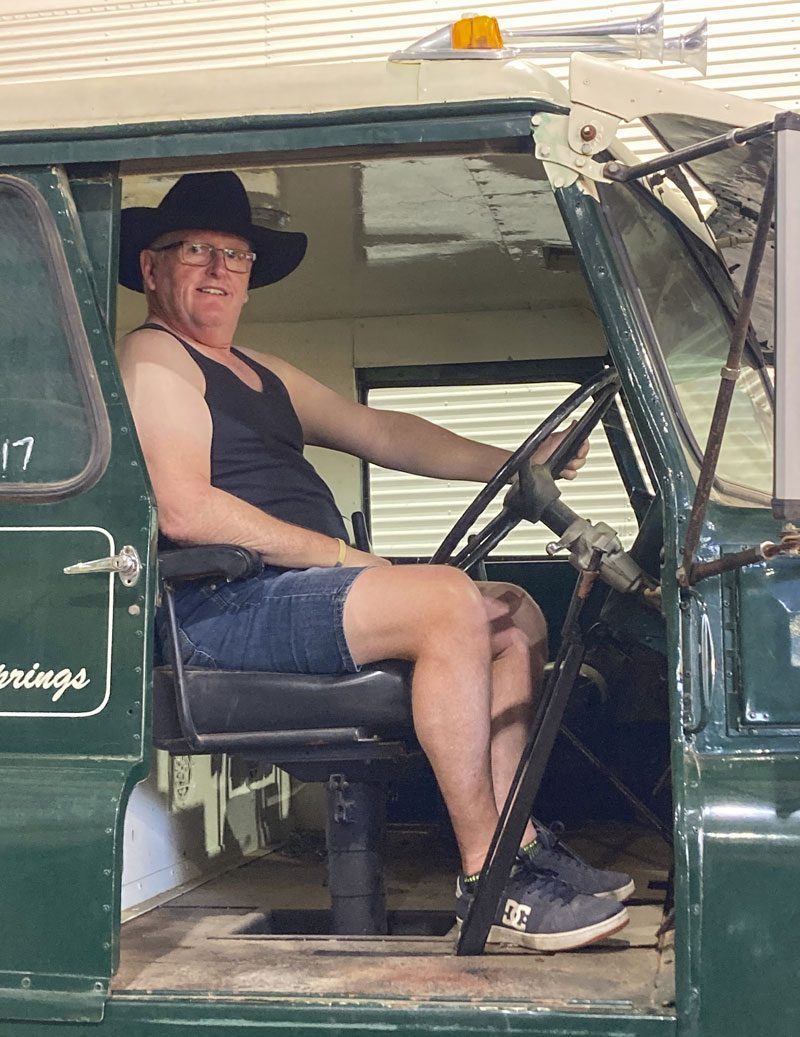Holidays are great aren’t they! If your job is taking photos and writing about trucks, then what better way to spend some time off than to take photos and write about trucks!
It is hard for me to work out the difference between my job and my passion. There’s an old saying, if you love what you do, then you will never work a day in your life. You should all remember that.
Every five years my mate Craig McCauley and I go on a road trip in Australia to remember a great friend who died 15 years ago. Guy Spurr loved trucks. He was a well-known photographer and writer in the industry. If you look back in the New Zealand Trucking magazine, you will find his wonderful stories to read. Guy loved the Australian road train scene, cattle trucks in particular, so we always remember him by going to one of the places he (and we) love most. The Australian Outback. This year, we had Rob van der Hoek and Dave Connor along for the ride. Great mates and first-rate truck photographers.
The Outback
Firstly, what is the Australian Outback? The outback is the name given to the huge interior of Australia where there are not many people, but a whole lot of land and space. It contains desert, national parks, and huge pastoral (grazing) farms and stations.
The outback is also the traditional home of Australia’s famous truck and multi-trailer rigs known as road trains! Most commonly, a road train is a tractor and semi-trailer combination towing a second trailer (called a double), often a third trailer (called a triple – most popular), or even four trailers (a quad). There are lots of different ways the trailers can be connected, and different weights and lengths too. The classic triple combination is normally 53.5m long and with the right permits they can operate at 124.5 tonnes GCM. GCM stands for Gross Combination Mass and refers to the weight of both the rig and its load. On one part of our trip we went to see 59.5m quad combinations able to carry up to 120 tonnne of product.
I’ve included a map of our road trip, and the red line shows you where we went.
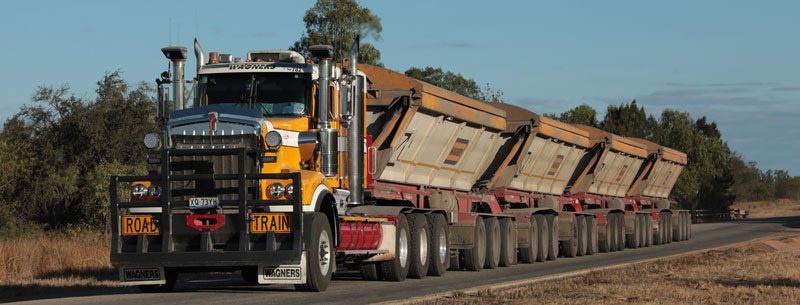
Our trip started in Mt Isa, a big mining town in western Queensland. We then went to Cloncurry for a couple of days and caught up with some close friends before travelling east to Julia Creek for a day photographing trucks there. Julia Creek is on the Flinders highway that runs between Cloncurry and Townsville. A lot of freight, fuel, and cattle are trucked on that road!
Do you have Issue 2 of Little Trucker Down Under in your collection? Have a look at the Pratt family’s cool truck on both the cover and on the poster of that issue. Where did it come from? That’s right, Julia Creek!
We then travelled 1329km from Cloncurry in Queensland to Alice Springs in the Northern Territory. The first 792km took us across the Barkly highway to a famous road house called ‘Three Ways’. It is located where the East/West Barkly highway meets the North/ South Stuart highway. From there we travelled 537kn south to Alice Springs. That one trip was the same as travelling from Auckland to Wellington and back, or Christchurch to Invercargill almost two and half times! Crikey! The car was puffing and needed a rest at the end of that!
See if you can find that part of the trip on the map. It will show you just how huge Australia is.
At Alice Springs we visited the National Road Transport Museum and the Kenworth Dealer Hall of Fame. I had never been, so it was a huge thrill for me.
While there, I was finally able to see the restored Rotinoff Viscount cattle truck on display – a real bucket list thing for me. Vesty Brothers bought two identical Rotinoff Viscount trucks in the late 1950s – one named Jackie and one named Julie. The trucks were famous early cattle road trains able to carry more cattle at a quicker speed – about 50km/h believe it or not – with new levels of driver comfort. I have always been interested in these two trucks, and what a thrill it was to actually sit in a Rotinoff Viscount. Sadly, only one could be restored, and poor old Jackie had to donate her bits and pieces so Julie can sit proudly in the museum today. It’s great to know one of the trucks is safe and sound, even if she doesn’t have her cattle crates on any more.
There is so much truck and road train history at the museum. Make sure it is on your ‘bucket list’ for when you are a little older! It is a must see.
After Alice Springs we motored north up the Stuart Highway toward Darwin. Word had gotten out that we were on the road taking photos and the truck drivers tooted, flashed lights, and waved. The outback is a friendly and welcoming place, full of great people.
When we were north of the Three Ways roadhouse again, we had a cool assignment to complete.
In 1987, a special truck won the Australian Truckin’ Life magazine Rig of the Year competition. It was a V8 Mack Super-Liner named Blue Thunder, owned by Kiwi-born Neville Dobbs. It hauled refrigerated trailers between Adelaide and Darwin for Northern Territory Freight Services (NTFS). We were all younger back then, and the famous poster of Blue Thunder, taken at a place called Churchill’s Head on the Stuart highway captured the hearts of all of us young ‘truckers’! Our good mate Carl Kirkbeck recently built a model of Blue Thunder by reconstructing the Highway Replicas NTFS Mack road train model. He lent us the finished Blue Thunder model to bring on our road trip so we could take its photo at Churchill’s Head – just like in the 1987 poster.
The Stuart Highway bypasses Churchill’s Head now, but the old road is still there, today just a sideroad. What a thrill it was to find Churchill’s Head and retake the great photo. A truly fantastic moment.
Next was the 360km side trip up the Carpentaria highway to capture those big 60 metre long and 240 tonne ore carting road trains I talked about. Owned by Wagners, the road trains cart their loads 120km from the McArthur River mine to the port at a place called Bing Bong (truly, it is called Bing Bong). Have you found it on the map yet?
There was one more special place I wanted to see. Remember those Rotinoff Viscount cattle road trains from the 1950s on display at the National Road Transport Museum? Those trucks were used to cart cattle from the Maryville road train compound at Helen Springs Station in the Northern Territory to Comooweal in Queensland. The old compound is still there, and I stood right where the Rotinoffs would have loaded. What a trip this was!
From there we travelled on to the town of Katherine. It is here the main road from West Australia, called the Victoria Highway, meets the Stuart Highway. This makes Katherine another busy meeting place for trucks. It was also home to one of Australia’s most famous outback truck companies – Buntine Roadways, founded by the late Noel Buntine.
Our wonderful holiday ended in Darwin, where we spent three days photographing the trucks rolling in and out of Australia’s northernmost city. What a wonderful holiday, following my passion for trucks with fantastic mates.
Just think, one day you too will be able to go on a cool road trip somewhere with great friends and take photographs of amazing trucks. I’ll look forward to reading about it.


